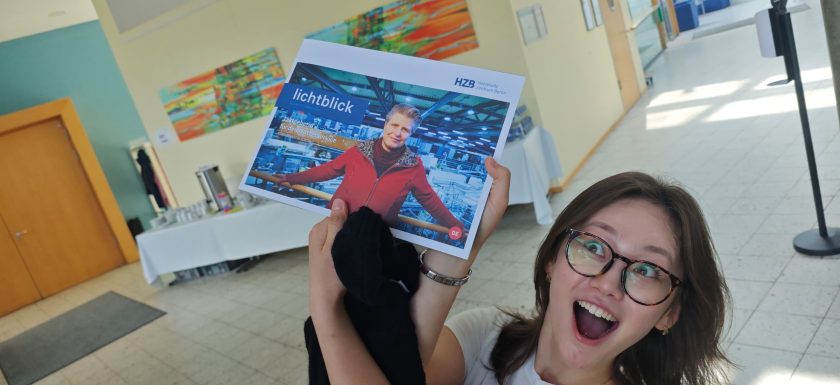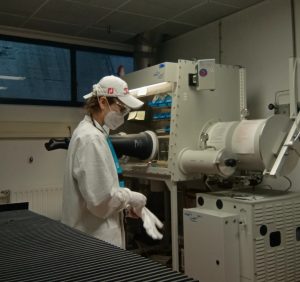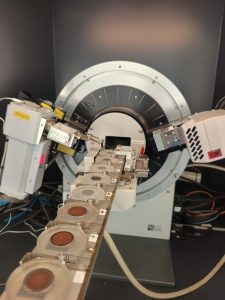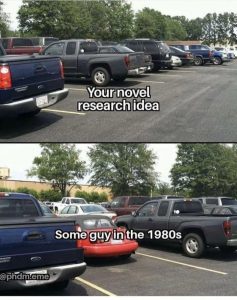
By summerstudent Smat Inzhumarzhan >
Summer internship, notes from the lab:
This morning I found myself greeting the balance before anything else. It feels more important at times than checking email. Placing the vial, setting the scale to zero, tare, and counting down those few suspended seconds.In that quietness, I hear myself most clearly.

I am spending the summer in Berlin, working on lead-free alternatives to perovskites. Perovskites are semiconductors molecules with remarkable optical and electronic properties, which make them highly attractive for solar cells and other applications. Working with them is not about dramatic reactions, but about tiny, consistent steps: dissolve, mix, and finally dry everything into a powder. Each compound follows the same route, so that comparisons remain fair. Then come XRD and UV-Vis. The crystals answer with their peaks, and I write them down.
Why this work matters

Lead gives perovskites their brilliance, but it also brings a serious limitation: toxicity. That is why we search for ways to replace lead with safer, less toxic elements — not with promises or bold claims, but simply to see what lies ahead. Our task is quiet: to describe the structure, to trace the optical gap, and to see how light interacting with a powder reveals its hidden properties – such as color, composition, and energy levels.
One method, many voices
Every sample goes through the same procedure. Sometimes I wonder: where does uniqueness enter? But after XRD and UV-Vis, the differences speak for themselves — new peak sets, new lattice parameters, new bandgap. The protocol’s sameness makes those differences visible.

Along with that came a lesson worth remembering: nobody walks the same path in science. The paths can be similar, the decisions, the circumstances, the hands are our own. Even if it sometimes feels as if what you are doing is not the most innovative idea, remember – it is still valuable, it matters here and now.
Small conclusions
One method, few systems, two measurements — enough to make fair comparisons?
It’s constant action on a claim, not big sweeping statements.
The best thing is not the perfect result but the inner, calm confidence that tomorrow I can repeat.
About the author: Smat Inzhumarzhan studies Chemistry at Al-Farabi Kazakh National University and is a participant of the HZB International Summer Student Programme 2025. She is working at Helmholtz-Zentrum Berlin under the supervision of Ana Palacios Saura in the SE-ASD group, focusing on structure–property relations in perovskite-inspired materials through solution-based synthesis, X-ray diffraction, and UV-Vis spectroscopy.
